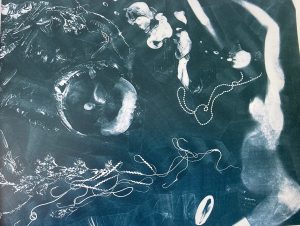XEROGRAPHIE – ARTISTES FEMMES, 1965-1990
Colloque, 18 et 19 nov. 2021
Institut national d’histoire de l’art
Organisatrices : Judith Delfiner (Université Paris Nanterre) et Zanna Gilbert (Getty Research Institute)
Ce colloque entend offrir un état de l’art sur l’utilisation de la xérographie par les artistes femmes, une pratique qui, à ce jour, n’a fait l’objet d’aucune étude approfondie. Apparue dans le champ de l’art au début des années 1960, la xérographie (du grec xeros, sec, et graphein, écrire) apparaît comme une pratique de l’entre-deux bordée en amont par la photographie et en aval par l’avènement de l’image numérique. Si des artistes masculins l’explorèrent à travers leurs œuvres – en témoigne de manière paradigmatique le Xerox Book coordonné par Seth Siegelaub – l’émergence de ce phénomène et son développement, en particulier sur le sol américain, furent essentiellement le fait d’artistes femmes. Souvent considérées comme de simples suiveuses, voire comme de vraies copistes, il n’est pas surprenant que ces dernières aient investi la nouvelle technologie dans un contexte artistique et culturel qui érigeait en valeur suprême le principe d’originalité. Succédant aux grandes œuvres – souvent masculines – de l’expressionnisme abstrait, les images xérographiques résultaient du détournement de l’usage bureautique de la photocopieuse en vue de produire des compositions inédites qui venaient jeter un trouble sur la distinction par trop simpliste entre l’œuvre originale et sa copie. Tandis que les années 1970-1980 furent celles de l’apogée du féminisme caractérisé par un activisme contestataire, une autre histoire se profilait dans l’obscurité des ateliers de reprographie des écoles d’art et des copy shops, la xérographie comme théâtre d’une critique sociale qui, sans être ostentatoire, n’en était pas moins effective, ce pourquoi elle fut naturellement associée à la notion de « contre-culture » qui privilégiait des moyens de diffusion alternatifs comme l’affiche, le fanzine, l’art postal, la performance ou encore le livre d’artiste. Pratique intermédiale par excellence mettant à mal la notion de spécificité par la production d’une image mécanique infiniment reproductible, la xérographie fut vécue comme une forme de menace à laquelle répondit la montée en puissance de la question du médium qui devait dominer durablement les débats de la critique d’art. En faisant dialoguer historiens de l’art, critiques, conservateurs, commissaires d’exposition et artistes, cet événement scientifique entend combler une lacune historiographique sensible, en portant un nouvel éclairage sur la scène artistique des années 1960 à 1980, à laquelle la xérographie participa, sourdement certes, mais activement et sur le plan mondial.
This symposium aims to offer a state of the field reflection on women artists’ use of xerography, a practice that, to date, has not been the subject of any in-depth study. Appearing in the artistic field during the 1960s, xerography (from the Greek xeros, ‘dry’ and graphein ‘to write’) appears as an in-between practice bordered upstream by photography and downstream by the advent of the digital image. While male artists did explore the new technology in their work—mostly notably in the Xerox Book coordinated by Seth Siegelaub—the emergence of this phenomenon and its development, particularly on American soil, were essentially the work of female artists. Often considered as mere followers, even as true copyists, women artists investigated the new technology in an artistic and cultural context in which the principle of originality was a supreme value. In contrast to the celebrated, and often masculine works of abstract expressionism, xerographic images diverted the photocopier’s office use in order to produce compositions that challenged the simplistic distinction between the original work and its copy. The years 1970-1980 were the apogee of a feminism characterized by protest activism. In the reprographic workshops of art schools and copy shops, xerography became part of the staging of a social critique. This artistic production had much in common with the broader counter-culture which favored alternative means of distribution such as posters, zines, mail art, performance or artists’ books. Xerography was an Intermedial practice par excellence; it challenged the notion of medium specificity by the production of an infinitely reproducible mechanical image and was thus experienced as a threat from which a retrogressive doctrine of the medium came to dominate the debates of art criticism. By bringing together art historians, critics, curators, and artists, this event aims to fill a historiographical gap, bringing new perspectives to the art scenes of the 1960s-1980s, in which xerography participated actively and globally.
PROGRAMME
JEUDI 18 NOVEMBRE
09h15 Accueil des participants
09h45 Ouverture du colloque par Éric de Chassey, directeur de l’INHA
09h55 Mots de bienvenue d’Andrew Perchuk, directeur adjoint du Getty Research
10h05 Introduction par Judith Delfiner (université Paris Nanterre) et Zanna Gilbert
(Getty Research Institute)
SESSION 1 : REPRODUCTION ET XEROGRAPHIE CHEZ LES ARTISTES FEMMES
Modération par Eric Robertson (Royal Holloway, université de Londres)
10h30 Tamara Trodd (université d’Edimbourg)
« Un monde soufflé depuis la chambre à bulles d’une photocopieuse » : Of
Mutability (1986) d’Helen Chadwick
“A world blown from the bubble chamber of a photocopier”: Helen Chadwick’s Of
Mutability (1986)
10h55 Karen Di Franco (Chelsea College of Arts, UAL, Londres)
La publication de soi : fiction et esthétique de l’auto-édition dans le New York
des années 1970
Publishing the Self: Fiction and the Aesthetics of Self-Publishing
in 1970s New York
11h20 José R. Alcalá (université de Castille, Castille-La Manche)
Artistes pionnières du Copy Art dans la collection du Musée international
d’électrographie de Cuenca, Espagne
Pioneering Women of Copy Art in the Collection of the International Museum of
Electrography of Cuenca, Spain
11h45 Discussion
12h30 Déjeuner
SESSION 2 : ESPACES ALTERNATIFS ET COLLABORATIFS
Modération par Annabela Tournon Zubieta (École nationale supérieure d’arts de Paris-Cergy)
14h00 Mari Rodríguez Binnie (Williams College, Williamstown)
Dans et contre le courant : Vera Chaves Barcellos et la xérographie
With and Against the Grain: Vera Chaves Barcellos and Xerography
14h25 Mara Polgovsky Ezcurra (Birkbeck, université de Londres)
Electric Corpora : l’électrographie au Mexique, un aperçu de son histoire
féministe
Electric Corpora: Electrography in Mexico, Snapshots of its Feminist History
14h50 Jenni Sorkin (université de Californie, Santa Barbara)
Reproduction et résistance au Woman’s Building de Los Angeles
Reproduction and Resistance at the Los Angeles Woman’s Building
15h15 Discussion
16h00 Paroles d’artiste : Marisa González
VENDREDI 19 NOVEMBRE
09h45 Accueil des participants
SESSION 3 : COLLABORER AVEC LA MACHINE
Modération par Peter Geimer (université Libre, Berlin)
10h30 Richard Torchia (université d’Arcadie, Glenside)
La xérographilie de Pati Hill
Pati Hill’s Xerographilia
10h55 Taous Dahmani (université Paris 1 Panthéon-Sorbonne)
L’art de l’immédiateté de Rita Keegan
Rita Keegan’s Art of Immediacy
11h20 Jacob Lillemose (université de Copenhague)
Pirater les machines, engendrer des images : sur la pratique artistique de Sonia
Landy Sheridan Hacking Machines, Generating Images: On the Artistic Practice of
Sonia Landy Sheridan
11h45 Discussion
12h30 Déjeuner
SESSION 4 : PRATIQUES CURATORIALES
Modération par Julie Jones (Centre Georges Pompidou)
14h00 Jean-Louis Boissier (université Paris 8)
« Toutes les copies » dans Les Immatériaux, 1985
“Toutes les copies” in Les Immatériaux, 1985
14h25 Michelle Cotton (Mudam, Luxembourg)
XXérographie
XXerography
14h50 Maurin Dietrich (Kunstverein, Munich)
Pati Hill : comparez-moi à moi-même
Pati Hill: Compare Me to Myself
15h15 Discussion
16h00 Paroles d’artiste : Kameelah Janan Rasheed
19h00 Séance de films au Centre Georges Pompidou : « Thanks to Zerox »
Cinéma 2 (entrée libre)
Toutes les communications, à l’exception de celles de Taous Dhamani et de Jean-Louis Boissier, seront données en anglais.
All papers, with the exception of those of Taous Dhamani and Jean-Louis Boissier, will be given in English







Leave a Reply
You must be logged in to post a comment.